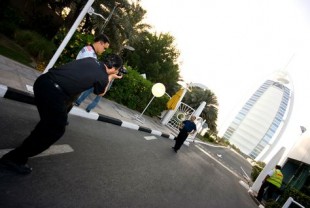

Dubai hotels welcome 11 million guests in 2013

Dubai’s hotels welcomed more than 11 million guests in 2013 – an increase of just over one million on the previous year – in what has been hailed as a positive sign the emirate can achieve its goal of 20 million visitors annually by 2020.
The Dubai Department of Tourism and Commerce Marketing (DTCM) data showed guest numbers across all hotel establishments (hotels and hotel apartments) between January and December reached 11.01 million compared to 9.96 million recorded in 2012.
Of this, Dubai’s top 10 hotel guest source markets were Saudi Arabia, India, UK, USA, Russia, Kuwait, Germany, Oman, Iran and China.
The Australian market experienced the most growth, with numbers up by 39 percent to more than 269,000 visitors in 2013 – a result largely attributed to increased flights following the partnership between Emirates airline and Qantas announced in April 2013.
The DTCM said Saudi, consistently Dubai’s primary source market, experienced further growth, with visitors up by 19.9 percent to 1.35 million.
The Chinese tourism market also grew, with visitors up by 11 percent, partly as a result of bolstered marketing efforts and the opening of DTCM’s fourth China office in late 2013.
“The strong growth shown in hotel establishment guests in 2013 is a positive first step on our journey to 2020,” Helal Saeed Almarri, Director General of DTCM, said.
“Having announced the Tourism Vision for 2020 in May 2013, a 10.6 percent growth in hotel establishment guests demonstrates that we are on track to double the 10 million tourists received in 2012 to 20 million per year by 2020 and is an affirmation of the destination’s ever increasing appeal.”
The data, released ahead of the International Tourism Bourse (ITB) in Berlin this week, showed revenue for hoteliers and hotel apartment operators also grew by 16.1 percent overall, reaching AED 21.84bn ($5.95bn) in 2013.
Total guest nights also increased by 11 percent to 41.57 million, while occupancy rates for hotel rooms and hotel apartments increased from 78 percent to 80 percent. Occupancy was 82 percent for hotel apartments, up 6.5 percent compared on 2012.
A 16.1 percent increase in revenues for our hoteliers is an indicator of the healthy state of the hospitality industry while an occupancy rate of 82 per cent demonstrates to the hotel investment industry that Dubai is one of the world’s most attractive investment opportunities,” Almarri said.
DTCM said the number of hotel rooms and apartments at the end of 2013 was 84,534 at 611 establishments, compared to 80,414 rooms at 599 establishments in 2012.
Under the current development pipeline for 2014-2016 there will be an additional 141 hotel establishments added to the market, including 99 hotels and 48 hotel apartments bringing the total to 751 hotel establishments and just under 114,000 rooms.
“In order to provide accommodation for our targeted visitor numbers for 2020, we estimate we need a total of between 140,000 to 160,000 rooms and will work closely with the investment industry to make this happen,” Almarri said.
The range of hotel offerings, however, also needed to continue to expand to attract a wider market of visitors, the department said.
In September 2013 the Government announced a concession on the standard 10 percent Municipality Fee levied on the room rate for each night of occupancy as an incentive for developers to bring forward construction timelines for three and four-star hotels.
This was followed by a series of directives from Dubai ruler Sheikh Mohammed bin Rashid Al Maktoum in January this year designed to enhance and streamline hotel investment in the emirate.
The DTCM figures showed hotel openings in 2013 included the Barjeel Guest House in Bur Dubai as well as a number of two, three and four-star properties including Vida Downtown Dubai, Movenpick Hotel Jumeirah Lakes Towers and Novotel Hotel Al Barsha. Five-star hotel openings included the Conrad and Oberoi, with two new five-star resorts on the Palm Jumeirah, Sofitel and Anantara.
“The financial incentive to develop more mid-range hotels has been received very well by the hotel investment and development industry and will swell the number of mid-range hotels which are constructed and opened in the next three to four years,” Almarri said.
“DTCM continues to work with our governmental and industry partners to ensure all measures are taken to broaden the destination offering.”
A recent report by Ernst & Young alsp revealed that hotel occupancy rates of 80 percent were maintained in Dubai during 2013, despite nearly 2800 new rooms being added to the supply chain.